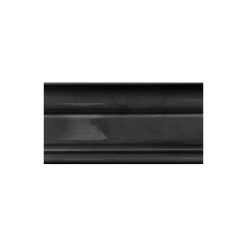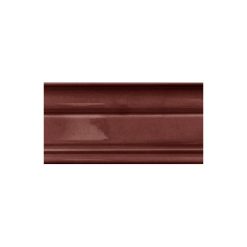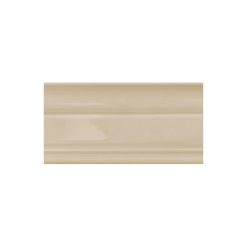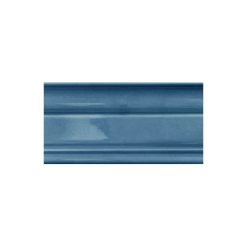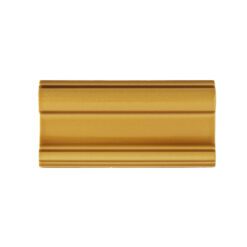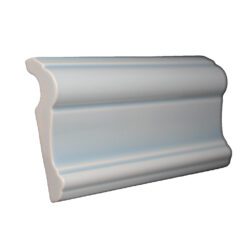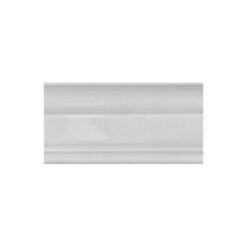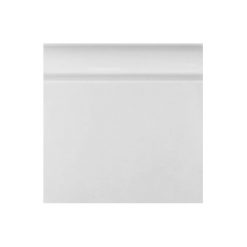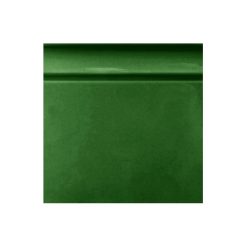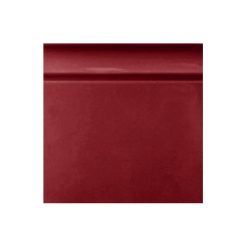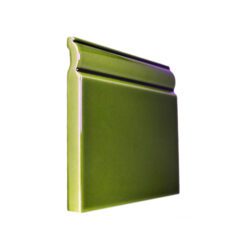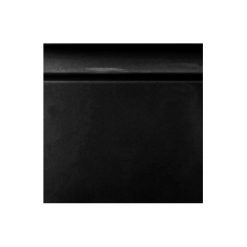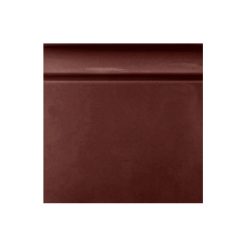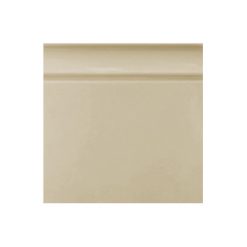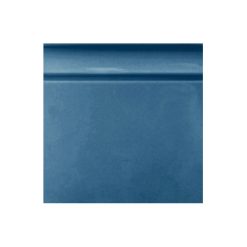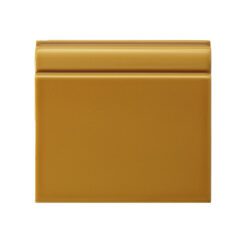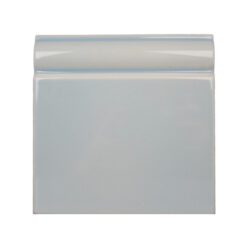Victorian Black Classic Moulding 6″x3″ – Part of the FireTile range of Victorian Wall Tiles which includes everything you need to create a classic period design, from plain tiles, mouldings and corners to panels, borders and feature tiles.
Teapot Brown Classic Moulding 6″x3″ Wall Tile – Part of the FireTile range of Victorian Wall Tiles which includes everything you need to create a classic period design, from plain tiles, mouldings and corners to panels, borders and feature tiles.
Magnolia Brown Classic Moulding 6″x3″ Wall Tile – Part of the FireTile range of Victorian Wall Tiles which includes everything you need to create a classic period design, from plain tiles, mouldings and corners to panels, borders and feature tiles.
Midnight Blue Classic Moulding 6″x3″ Wall Tile – Part of the FireTile range of Victorian Wall Tiles which includes everything you need to create a classic period design, from plain tiles, mouldings and corners to panels, borders and feature tiles.
Bluebell Classic Moulding 6″x3″ Wall Tile – Part of the FireTile range of Victorian Wall Tiles which includes everything you need to create a classic period design, from plain tiles, mouldings and corners to panels, borders and feature tiles.
Inca Gold Classic Moulding 6″x3″ Victorian Wall Tile – Part of the FireTile range of Victorian Wall Tiles which includes everything you need to create a classic period design, from plain tiles, mouldings and corners to panels, borders and feature tiles.
Moonstone Classic Moulding 6″x3″ Victorian Wall Tile – Part of the FireTile range of Victorian Wall Tiles which includes everything you need to create a classic period design, from plain tiles, mouldings and corners to panels, borders and feature tiles.
Off White Classic Moulding 6″x3″ Wall Tile – Part of the FireTile range of Victorian Wall Tiles which includes everything you need to create a classic period design, from plain tiles, mouldings and corners to panels, borders and feature tiles.
Snowdrop Skirting 6″x6″ Victorian Wall Tile – Part of the FireTile range of Victorian Wall Tiles which includes everything you need to create a classic period design, from plain tiles, mouldings and corners to panels, borders and feature tiles.
Victorian Green Skirting 6″x6″ Victorian Wall Tile – Part of the FireTile range of Victorian Wall Tiles which includes everything you need to create a classic period design, from plain tiles, mouldings and corners to panels, borders and feature tiles.
Burgundy Skirting 6″x6″ Victorian Wall Tile – Part of the FireTile range of Victorian Wall Tiles which includes everything you need to create a classic period design, from plain tiles, mouldings and corners to panels, borders and feature tiles.
Jade Skirting 6″x6″ Victorian Wall Tile – Part of the FireTile range of Victorian Wall Tiles which includes everything you need to create a classic period design, from plain tiles, mouldings and corners to panels, borders and feature tiles.
Victorian Black Skirting 6″x6″ Victorian Wall Tile – Part of the FireTile range of Victorian Wall Tiles which includes everything you need to create a classic period design, from plain tiles, mouldings and corners to panels, borders and feature tiles.
Teapot Brown Skirting 6″x6″ Victorian Wall Tile – Part of the FireTile range of Victorian Wall Tiles which includes everything you need to create a classic period design, from plain tiles, mouldings and corners to panels, borders and feature tiles.
Magnolia Skirting 6″x6″ Victorian Wall Tile – Part of the FireTile range of Victorian Wall Tiles which includes everything you need to create a classic period design, from plain tiles, mouldings and corners to panels, borders and feature tiles.
Midnight Blue Skirting 6″x6″ Victorian Wall Tile – Part of the FireTile range of Victorian Wall Tiles which includes everything you need to create a classic period design, from plain tiles, mouldings and corners to panels, borders and feature tiles.
Victorian Blue Skirting 6″x6″ Victorian Wall Tile – Part of the FireTile range of Victorian Wall Tiles which includes everything you need to create a classic period design, from plain tiles, mouldings and corners to panels, borders and feature tiles.
Inca Gold Skirting 6″x6″ Victorian Wall Tile – Part of the FireTile range of Victorian Wall Tiles which includes everything you need to create a classic period design, from plain tiles, mouldings and corners to panels, borders and feature tiles.
Moonstone Skirting 6″x6″ Victorian Wall Tile – Part of the FireTile range of Victorian Wall Tiles which includes everything you need to create a classic period design, from plain tiles, mouldings and corners to panels, borders and feature tiles.
Off White Skirting 6″x6″ Victorian Wall Tile – Part of the FireTile range of Victorian Wall Tiles which includes everything you need to create a classic period design, from plain tiles, mouldings and corners to panels, borders and feature tiles.
Victorian Wall Tiles
Turing the Victorian era, developing gradually alongside the growth in the manufacturing of the floor tile industry, glazed Victorian wall tiles manufactured with white dust pressed bodies began to evolve. The history of the development of these tiles is interesting. In the paper "Nineteenth-Century Tiles. Industrial Mass Production and Construction Methods of Interior Tile Schemes in the Nineteenth and Early Twentieth Centuries" Lesley Durbin takes an in-depth look at how these tiles were manufactured and used in victorian properties and public spaces.
History of the Manufacture of Victorian Wall Tiles
Back In 1850, Minton manufactured a range of wall tiles which were decorated with enamel glazes, and designed by none other than Augustus W N Pugin. Surviving examples of these types of tile can be found in the Strangers Smoking Room at the Palace of Westminster. Minton and Pugin also produced a range of embossed tiles which were glazed with a variety of opaque glazes. These were first shown at the Great Exhibition of 1851 and later they were installed in Refreshment Room of the South Kensington Museum. As time went by, translucent colour lead glazes or art enamels superseded opaque tin glazes. At this time, the major issue needing to be solved was the correct marrying up of the body clay and the glaze mix. Without addressing this issue, the finished tile would quickly have a tendency to surface crazing with the chance for a loss of glaze. Producers of glazed wall tiles often failed to prevent crazing (which they considered to be a fault). Production difficulties arose from the limitless combinations of clay body mixes, glaze mixes and firing temperatures.
Through experimentation, the best tile manufacturers developed their own reliable clay tile body in the first instance, and thereafter developed glazes, dies and firing temperatures to suit tile shrinkage rates and adhesion. The body clay recipes were complicated, and over time, stains or additives were introduced to offer alternatives to the plain white body. Some Victorian wall tiles managed to achieve very beautiful hues by combining a coloured clay body and overlaying with a different colour glaze.
In developing new lines for mass production, manufacturers would frequently alter the standard body formula, vary the ingredients, adjust the size of dies or moulds, fire the tiles in various part of the kiln, or even burn the whole kiln differently. Despite the all this opportunity for variation and inconsistency, most manufacturers managed to develop their own distinctive ranges of colours and designs. These would frequently be identifiable as a particular manufacturers 'house style'.
The great majority of both plain and embossed tiles were manufactured by "dust pressing", though bespoke tiles and larger faience pieces were cast in plastic clay. These Victorian wall tiles were decorated in a variety of ways. The most common forms for these were embossed, transfer printed, impressed, and tube lined. A unique, distinctive feature of embossed wall tiles was that the contours of the tile allowed the glaze to run and form deep pools in the recesses of the embossing, creating a beautiful and distinctive two tone effect from just one one glaze colour. Our Period Embossed Victorian wall tiles are manufactured according to this time-honoured tradition and are used by home-owners and architects alike to create beautiful, period style walls.
The connection between Classical Architecture and Victorian Wall Tiles
These were five distinct orders originating in Ancient Greece and Rome which have come to be known as "Classical Order". Each "order" having its own distinctive proportions, profiles and details and made recognisable by the type of column used.
What are the five "Classical Orders"?
- Doric – the simplest with short, faceted, heavy columns with plain round tops and no base. Height of 4-8 times it’s diameter with a shaft channeled with 20 flutes. The Roman versions of te Doric order have smaller proportions and appear lighter.
- Ionic – slender fluted pillars with a large base and two opposing scrolls. Egg and dart motif originates from this order.
- Corinthian – the most ornate with a slender fluted column with an ornate capital decorated with two rows of acanthus leaves and four scrolls.
- Tuscan – very plain design, plain shaft, simple capital, base and frieze.
- Composite – combines the Ionic with the Corinthian orders.
An Example Victorian Wall Tile Layout
It is interesting to note that many of the design notes and proportions used for victorian wall tiles connect to the ancient principles of classical architecture. In a number of ways, the production of these wall tiles is an interpretation of classic architecture for wall applications.
By combining tiles and mouldings along the lines of these classical proportions, and authentic period design can be easily created. This typical wall tile arrangement illustrates the use of these tiles to create, however, just as there were a number of schools of classical architecture and some combined and borrowed elements from other, so there are a range of options of tiles and mouldings from which you can create your own unique style.
For help, advice and design suggestions, please call us on 01782 281617.


